On the Forever Front
Occupied and shelled, Lyman struggles to rebuild amid the sounds of increased shelling.
The devastated eastern town of Lyman has a ghostly air. Thirty kilometres from the regional capital of Kramatorsk, it lies by the relatively stable defensive lines of the Serebryansky Forest. Yet after occupation and shelling, and with nearby Russia artillery attacks on the rise, this modest city is uncertain whether the worst is behind it – or yet to come.
Since the fall of Avdiivka, commanders report increased shelling in the area, and a string of outlying villages – largely evacuated – are at risk. The town itself is reasonably calm, with the frontline 12 kilometres away, but everyone knows the situation could change quickly.
“Over the past few weeks, the shelling has been closer and closer and closer. The noise has been louder and louder, so I’m afraid it is going to get worse.”
“Over the past few weeks, the shelling has been closer and closer and closer,” says Anna, an assistant in a local hardware store. “The noise has been louder and louder, so I’m afraid it is going to get worse.”
Before the war, Lyman was an important rail hub, serving as a transit point for regional mining and with a significant agricultural sector. The forest and lakes supported tourism, attracting thousands to its beauty spots. A district promotional video looks like a summer away break in Vermont – swimming, fishing, lovers in the countryside sunset.
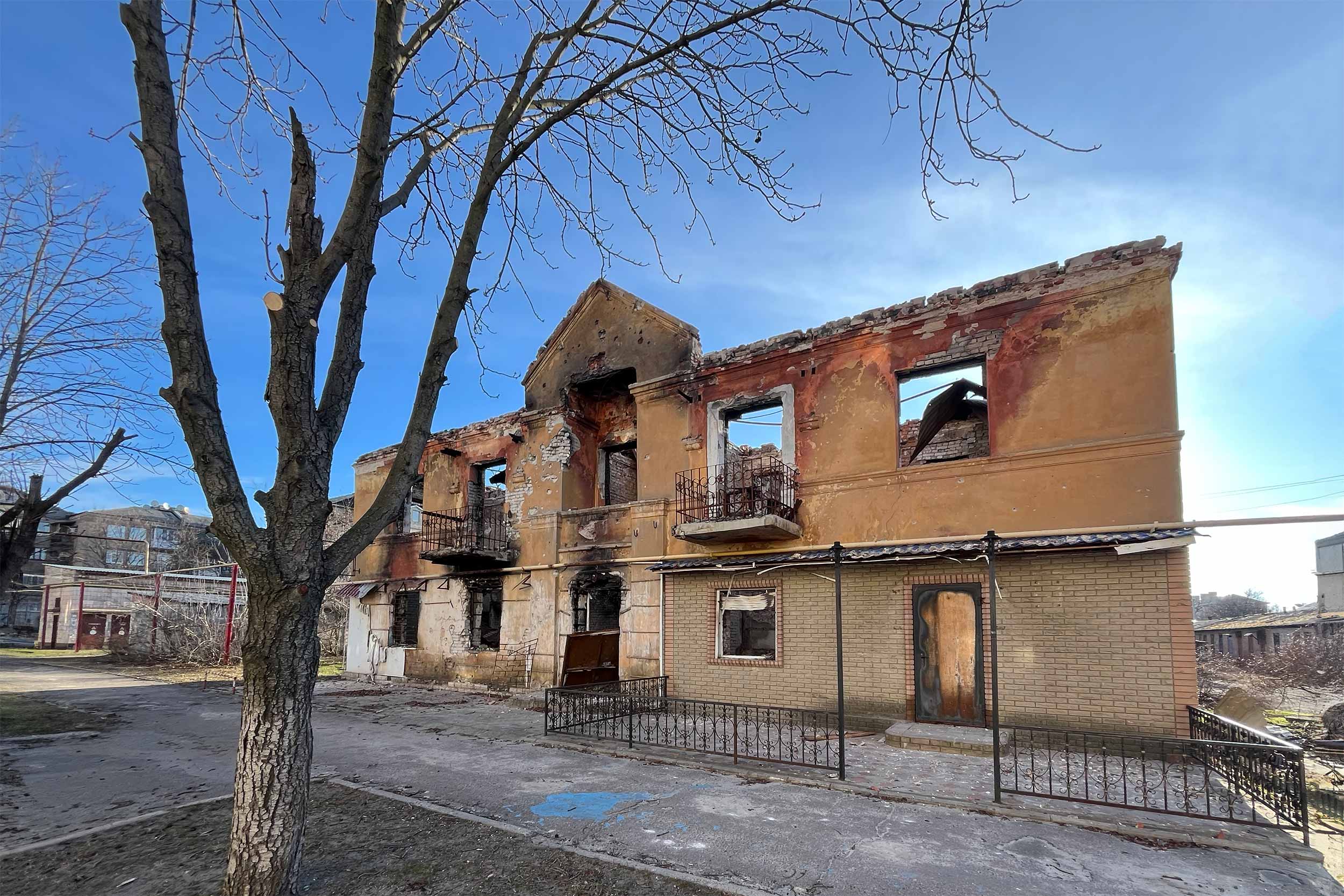
All exploded by war. Buildings throughout the city have been destroyed by shelling, much of it from the fighting during and after the city’s four-month occupation in 2022: a crashed side of a tower block, a hollowed-out shell of an office building, the burned-out expanse of a shop, black stripes of soot rising from an apartment window.
“We have to survive. But what can we do? We can say that we don't live, we exist. Everyone has left, everything is destroyed.”
From a total population for the town and surrounding villages of more than 51,000, less than 10,000 remain, including around 300 children. The rail network has been destroyed, with stations damaged and power lines down. Farming is not viable, with fields mined from the 2022 occupation and the investment of a fresh planting not worth the risk with Russians only kilometres away. Of 51,000 agricultural hectares available, only 1,150 is currently being farmed.
Aside from the heavy Ukrainian army presence, the only visitors now are aid workers bringing supplies and former residents who come to secure damaged homes or to check on stubborn parents refusing to leave property and pets.
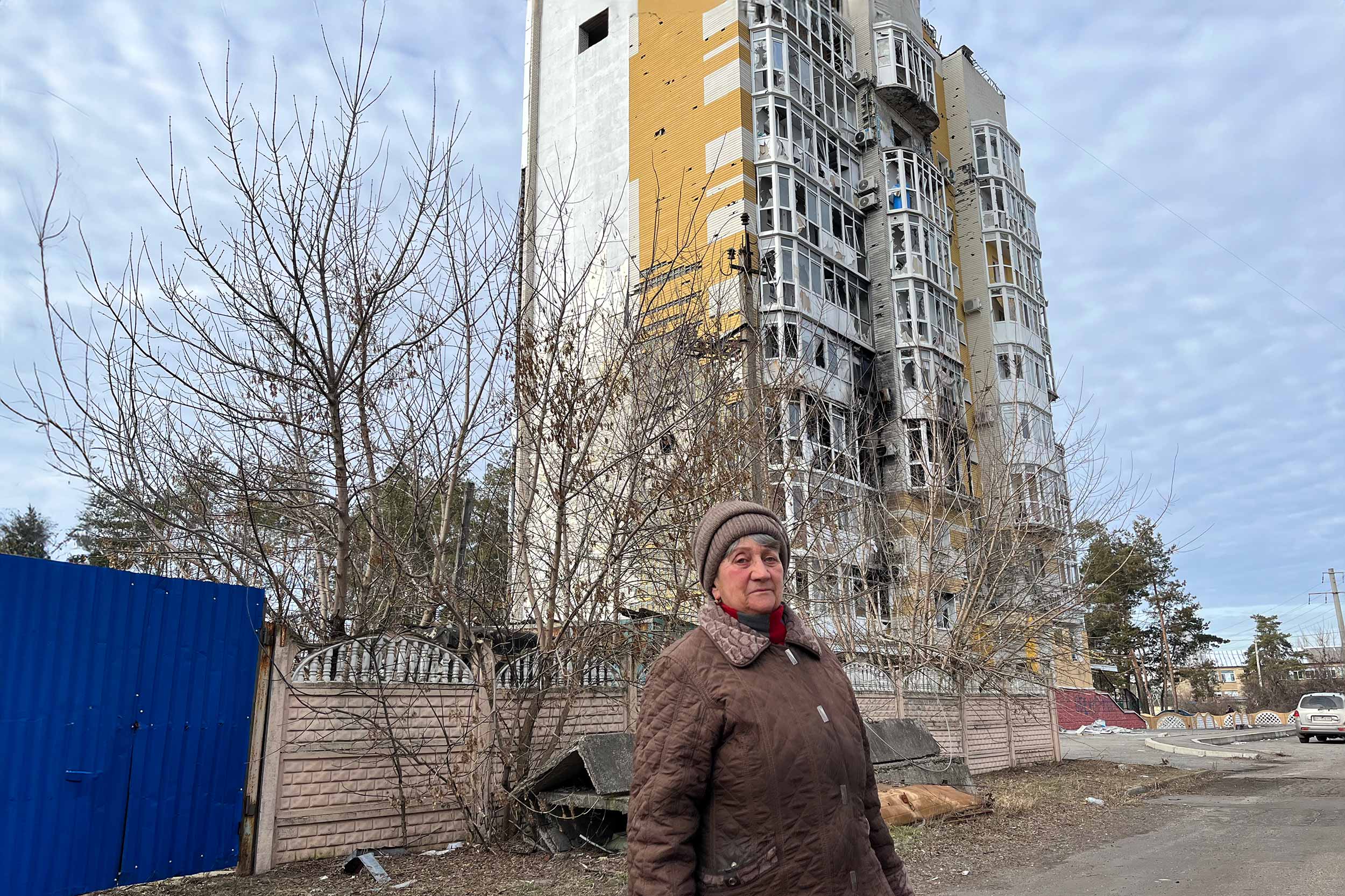
“I just want it to stop,” said Valentina, an elderly pensioner outside her heavily damaged residential building. “When, how, it’s not our decision, we can’t influence it, not average people. I just want it to stop as soon as possible. We have already gone through a lot. We don’t want to experience it any longer.”
Sergii, 62, lives in Dibrova village, seven kilometres away, where the population of 3,000 has collapsed to 70. He has come to Lyman to buy food and sell the milk from his two cows.
“We have to survive. But what can we do? We can say that we don't live, we exist. Everyone has left, everything is destroyed,” he said.
The local administration has restored electricity, gas and water to all areas of the town and all villages where possible. The shops that are open are filled with goods, including several food stores serving soldiers, a hardware store and a mobile phone shop. The emptied town has a tidy, if tired, air.
“Because we are close to the frontline, our region has been in constant strain since 2014,” said Oleksandr Zhuravlev, formerly the elected mayor and now appointed head of the Lyman military administration. “So how can people not be exhausted? Morally, physically exhausted. People have lost their homes, their loved ones.”
Zhuravlev is no exception. His mother was killed in shelling that destroyed the family home in Torske. This village, ten kilometres away, is currently under fresh threat, with less than ten per cent of the population of 1,600 remaining.
“She was sleeping peacefully,” he said. “There was an attack from the direction of Kreminna [to the east]. A mortar shell, in the middle of the night. Why did she die? Tell me, please. Why did the Russians decide that they should kill her? What for?”
Pointing to a destroyed tower block amid a moonscape of abandoned housing, local policewoman Valeria Bilenets said, “To me, this looks like Russkiy mir” – Russian world, the phrase for Moscow’s war ideology and, for her, a sense of what it brings to Ukraine.
“The city is calm right now and there are no new ruins,” said Bilenets, who works to support evacuations and aid for frontline villages. “The destruction you see is mostly from 2022-23, when Russians were advancing, and then when they were retreating. They were destroying everything they could to make people's lives here impossible.”
Most remaining residents are pensioners emotionally tied to their homes, and the destruction of large swathes of housing stock has made it difficult for others to return.
But the biggest problem is the uncertainty. Those few returning are balanced by those continuing to depart.
“The city is slowly being restored, people are coming back, people are also helping to repair their homes, helping each other, and removing the consequences of the enemy shelling, in residential and non-residential properties,” Bilenets said. “But these numbers are constantly changing, because people come to visit their homes then after some time they go back to safer places.”
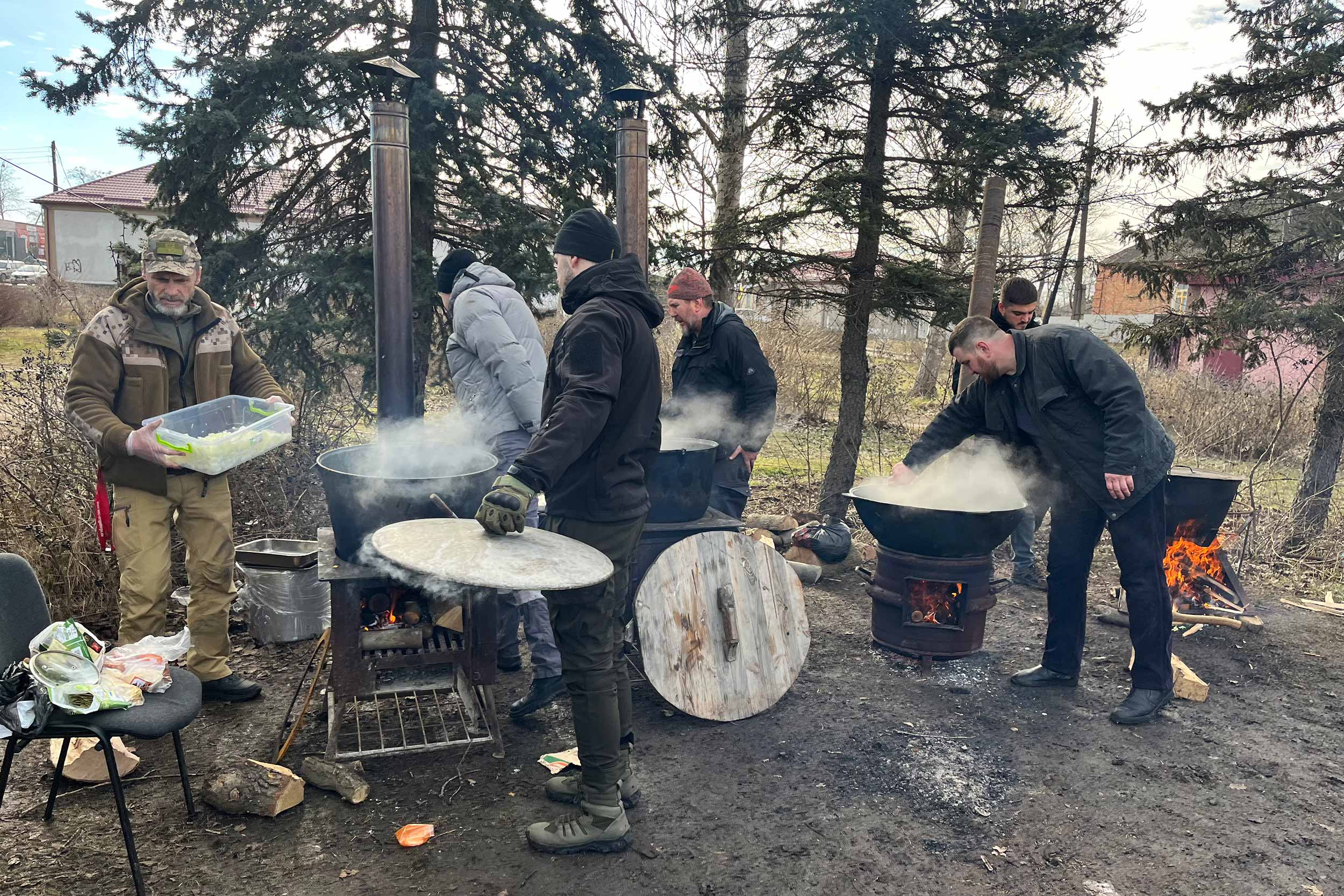
If the army protect the towns, the settlements also provide critical support for soldiers. In a nearby village called Paradise Town, under the towering heights of two gleaming chalk mountains, enthusiastic residents put on a generous picnic for soldiers, with full tables of borsht and potatoes and several large kettles with meat stews. Opposite, a roadside concession offered everything from military clothing and Ukrainian flags to knifes, holsters and home-jarred peppers.
Tucked in the centre of Lyman, amid much destruction, a large civic building houses an army medical unit. The windows are covered, the hall inside darkened, and a medic tends a treatment theatre in the basement lined with medical supplies and operating lights and glistening silver insulation panels.
The brigade here is Azov, which since Mariupol has been re-formed with new recruits plus soldiers released in prisoner exchanges. Evgeniy Chudnetsov, a senior medic, served in Mariupol, where he says his field hospital installation was air bombed four times, with deaths each time.
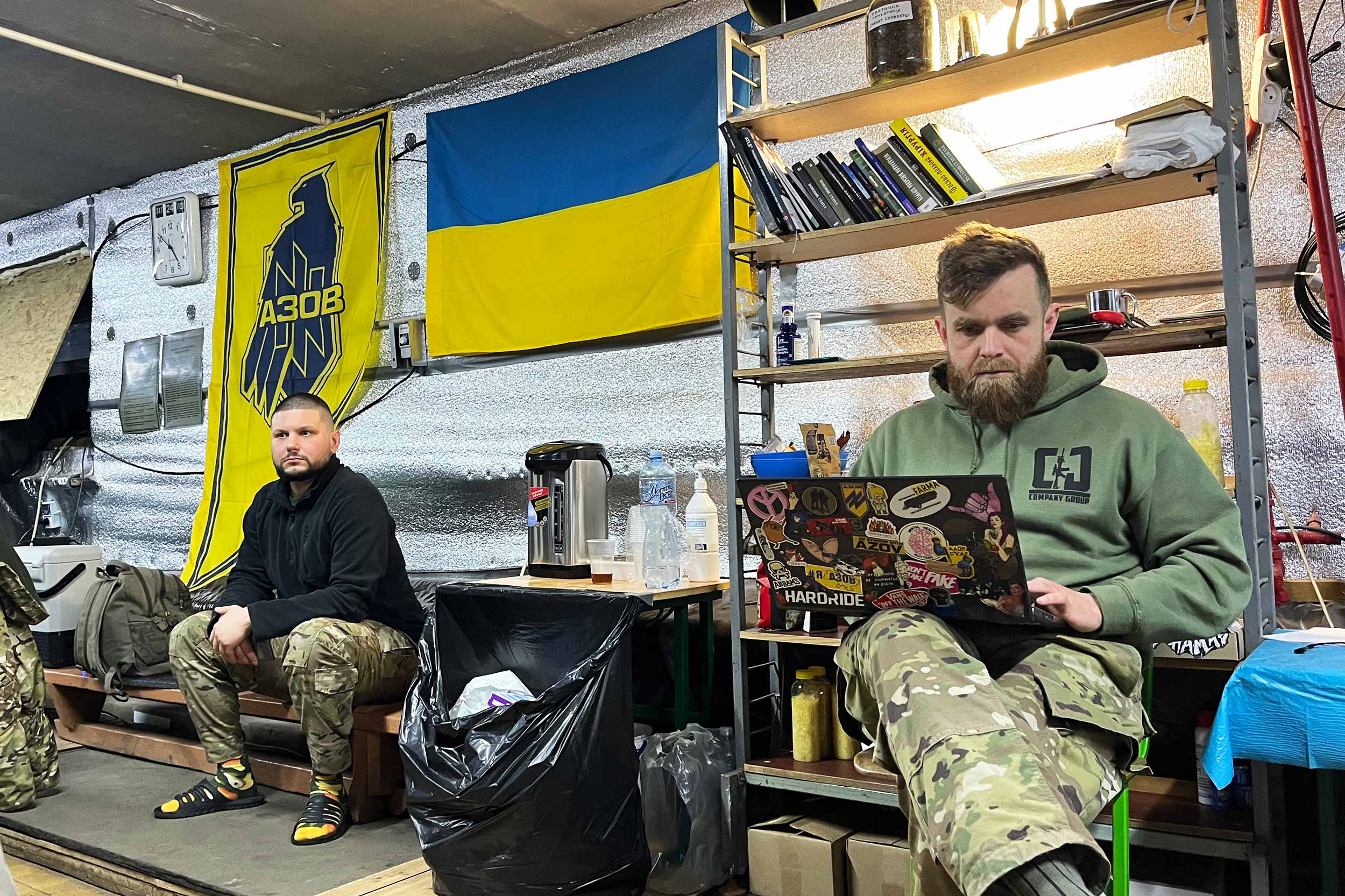
After the fall of Mariupol, he was detained by Russians for a year, hung by his arms and beaten daily. All of his teeth are implants. Showing a photograph of himself on release, 35 kilogrammes below his normal weight, he says he returned to the front after only two months’ recovery.
“There is work to be done,” he explained.
“After Russia wiped out some of our cities from the face of the earth, large cities completely [razed] to the ground, after hundreds of thousands of people died, I am radical, and I declare it responsibly. I treat Russia radically,” he said. “But if there is a hint that we are to be considered neo-Nazis, then it's complete nonsense.” An estimated 900 Azov soldiers remain in Russian detention.
Fully integrated into the Ukraine Army, the centre serves Azov and other units in the area, receiving wounded from field stations. At the height he said they had received 70 casualties in a day. But at the moment, there is less direct combat and most casualties are from artillery shrapnel and mines, with many amputations.
Amid the uncertainty of continued conflict, Zhuravlev, the area governor, remains convinced Ukraine will prevail. From a desk laden with papers, he is busy mapping out plans for reconstruction – re-establishing agriculture, renewing schools, rebuilding the bakery, rationalising the area’s administrative structures to account for those villages that can recover and those that will not.
“We understand that victory will be ours, that the Lyman community will be renewed,” he said. “All this is in the plans. It's all clear on paper, in our thoughts, in our dreams. God willing, we will survive, we will win.”
Outside, one street corner is relatively bustling. A pack of ten abandoned dogs gather around a woman feeding them scraps, while a few locals lay out items for sale on overturned boxes.
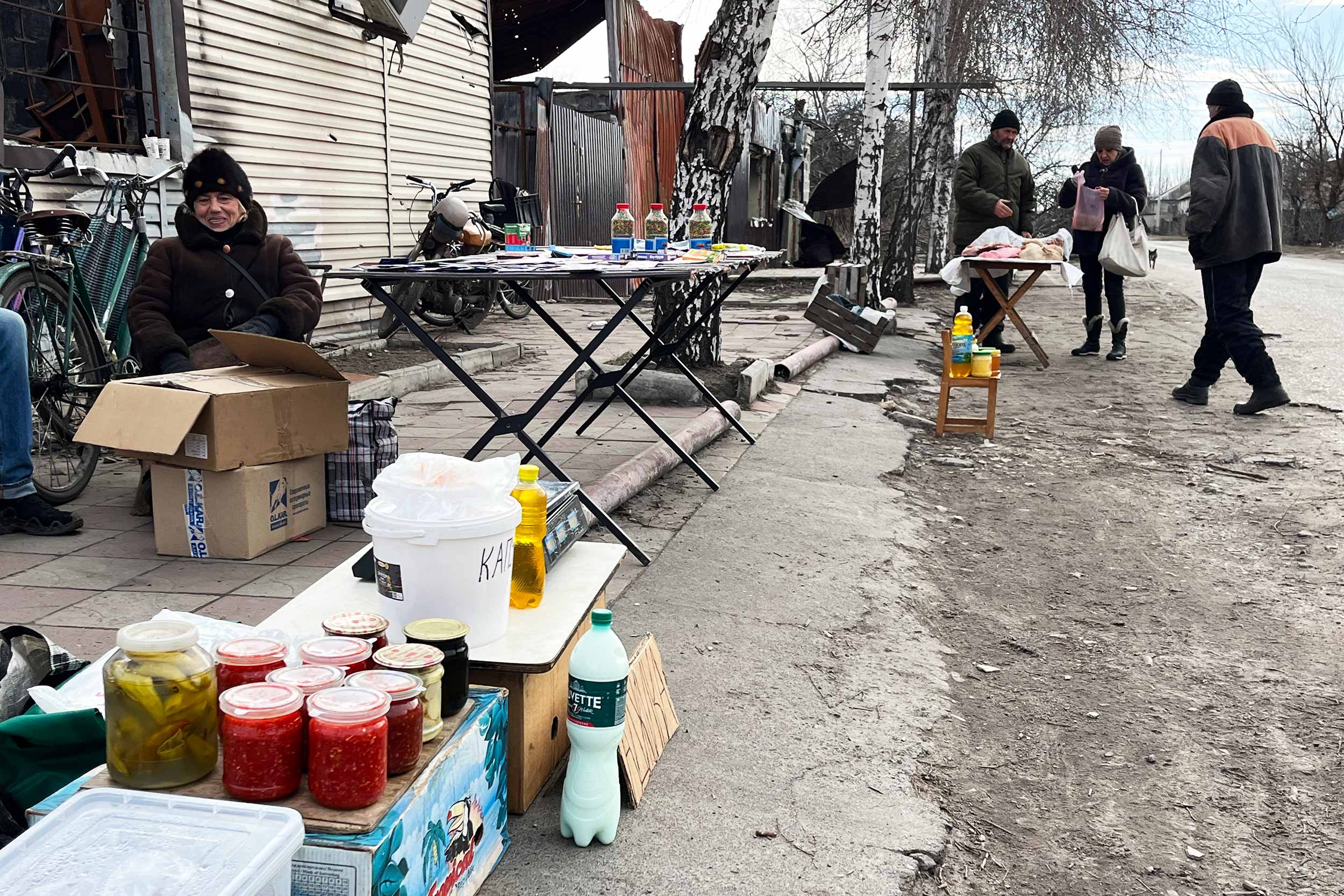
Zinaida, an elegant 72-year-old, specialises in vegetable seeds, but sales are not good.
“You see the situation, many broken houses and shops. How many things are lost, how many things are broken,” she said. “Now we just look and sigh. We are afraid all this will come back again. We go to sleep in fear and we wake up in fear. There is no confidence yet.
“Yes, you should buy seeds because we plant them and it means that we hope for the best. We believe in our future and we think that everything is going to be all right,” she continued.
“But even now, people are afraid to buy them. You put them in the ground, and then possibly there will be shelling and you will lose everything.”
Translation and additional reporting by Mykhaylo Shtekel.
